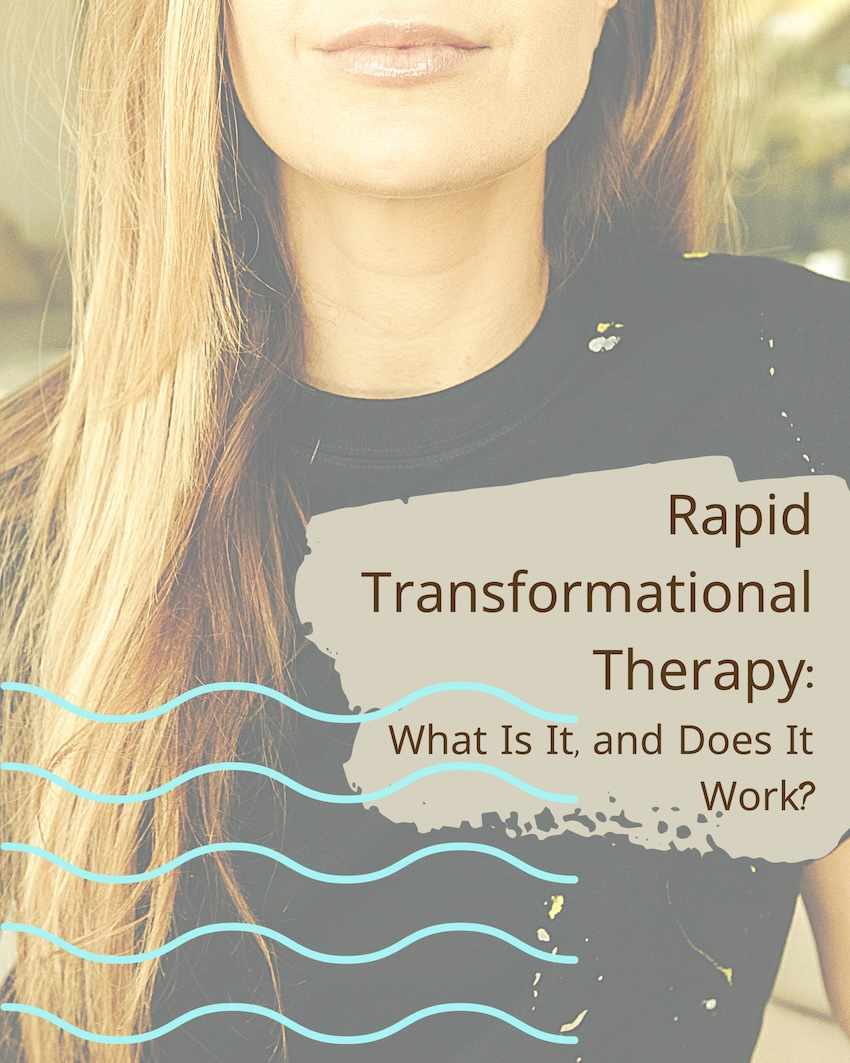What is Rapid Transformational Therapy (RTT) – And Does It Work?
June 11, 2021
Listen to the episode below for all the details on: What is rapid transformational therapy (RTT)? How does it work? What is the experience like? I share everything in this episode!

Is it just me, or did 2020 produce just enough stillness to force a cycle of intense self-reflection?
Sometimes, when you have nowhere else to go, you inevitably go inward.
Part of what I’m only now starting to realize, as I put pen to paper, is that it was a whopper of a Self-Discovery Year. Filled with deep talks with a medium, astrologer, breath work facilitator, human design expert, and therapist, I recently added another modality of healing to my roster: rapid transformational therapy, or RTT.
Rapid Transformational Therapy is essentially therapy on speed.
With one session, you go into a state of relaxation and reflection to heal past traumas, whether small or large.
I am about a month out of my session and, of course, wanted to share the details. It has been nothing short of transformational for me. While there is plenty of criticism surrounding RTT, it was a beautiful experience that helped me to let go of some behavior patterns that haven’t been serving me.
If listening is more your thing, check out the podcast episode on RTT. Shanna and I talk all about my session as well as frequent asked questions about Rapid Transformational Therapy. Listen here!

How does an RTT session work?
The Visualization
With my hypnotherapist, we spent about ten minutes getting into a hypnotic state. This involves visualizing. Your therapist will walk you through a scene that slowly gets you into the theta state. During this state of awareness, you experience a greater sense of peace and relaxation, and you are more suggestible than in your awake, or alpha, state.
Per Scientific American, the theta state is the state you may get in when you’re driving for a long period of time on the highway — where you feel present but definitely more “zoned out.”
The Scenes
After you’re under hypnosis, your therapist may guide you through recalling three scenes from your childhood. For me, and for many, these scenes will arise on their own naturally. Your therapist may ask about what you’re seeing and what you’re feeling in these moments.
To be honest, it’s kind of trippy but in the best possible way. For me, it was like looking at scenes from my life — which, well, I was — but processing them in a whole new way.
The Comforting
I’m totally making up this descriptor, but this is the part of the session where you greet and comfort your childhood self. It becomes clear how those scenes — those points of trauma or impact you just walked through with the therapist — really affected you as a child. It’s also where you start to heal.
Shanna had me picture my younger self (the age of the self that came through in one of my scenes, which for me was around 5 or 6) and reach down to hold and comfort her. To be honest, I bawled during this moment.
Now let me say: I had a wonderful childhood with parents and a sister who I remain incredibly close to today. And that’s the incredible thing about RTT: This isn’t reserved for those who have experienced, as Shanna says, just “Big T” traumas. Rapid Transformational Therapy is healing for any person who has experienced any level of hurt in their lives that impacted their growth or their healing abilities — which is to say, this is for everyone.
There can be a stigma with hypnotherapy, the idea that it is reserved only for those who are addicted, depressed, addled with anxiety or body issues, or feeling low all the time. That isn’t all it’s for, not by a long stretch. And I say this with no judgment against those referenced issues at all, but it’s important to note that Rapid Transformational Therapy can help address traumas on any part of the spectrum.
The Affirmations
Again, I’m using my own descriptive words for this part of the session, but this is the final part where your therapist will spend time affirming what you’ve seen and felt. She will offer a mantra of sorts — or maybe the better explanation is a long, guided thought for healing. And with Shanna, she also recorded this part so I can listen to it every night to reinforce the benefit of the session.
Shanna tells you to listen to your recording, which consists of the Visualization and Affirmation part of your session, for 21 nights following your session. She suggests you listen to it right before falling to sleep. You can even nod off to it. The new pathways you forged during your session will be reinforced as you listen to your unique recording.

What does a Rapid Transformational Therapy (RTT) session feel like?
For me, being in a hypnotic state throughout my RTT session basically felt like an “awake nap,” for lack of a better descriptor. I was incredibly relaxed but very conscious of everything I was feeling and saying.
You don’t say anything without a filter or anything you wouldn’t otherwise say while fully awake; it’s just that you’re so deeply opened—like on a soul level—that it doesn’t feel embarrassing or revealing to share what you’re truly feeling.
Another way to describe it is, it’s similar to the state of zen you feel right before you fall asleep or when you sit in silence for a while, except you stay there in that state and are able to converse.

Does RTT work?
I’m 21 days past my session, and I wholeheartedly believe this has helped me tremendously.
I’ve learned to separate myself from patterns of thought that I had for years — thought patterns that impacted the way I was able to communicate with people, in particular. It also taught me not get as frustrated when I face triggers with certain scenarios. Finally, it helped me realize that I act sometimes out of hurt — hurt that originated during specific times of my life — and that those reaction patterns no longer serve me.
In short, it’s made me calmer and less quick to react. It’s even sharpened my ability to set boundaries. Now that I know how certain emotional patterns drained me in the past, I can avoid circumstances that lead me down those paths.
I highly, highly recommend trying RTT with a certified hypnotherapist. Reach out to Shanna from Shine Wellness if you want more information. You can do it remotely or in person.

Here’s why I believe Rapid Transformational Therapy worked so well for me.
It’s important to reiterate that I am not an expert in mental health, so please take this analysis from the perspective of a patient only. This is my personal experience and the takeaways I learned from my session.
Okay, so let’s discuss why I think this worked for me. First, Shanna and I have a history together. She’s not only been on the podcast before (check out our amazing episode on being an empath here and how to conquer emotional eating here), but we have also been friendly for years. I truly believe this made a huge difference in helping me to feel relaxed.
The takeaway? If you’re going to open up to someone in the name of healing, I highly suggest someone who you feel comfortable around.
You shouldn’t choose a therapist who makes you feel nervous, beneath them, or unable to open up. I also suggest meeting with your therapist virtually or in person to see if they feel like a fit. If you don’t feel immediately comfortable, I’d search for someone else. If the whole purpose is to open up quickly, you want someone who you feel good with right away.
Another huge point that can’t be ignored is that I am what I like to call “well-therapized.” Ha. I have had a relationship with a wonderful therapist most years over the past decade. I’ve relied on talk therapy for some of the biggest changes and challenges of my life, from relationship and friendship issues to career changes.
Because of that, I’m very much able to articulate my feelings and emotions. This is a muscle that must be exercised. I think it’s worth noting that it played very well into my RTT session. I was able to easily open up due to years of practice.
This is not to say you have to be in talk therapy to have success with RTT. It’s simply that I believe it complemented my RTT session really well.
Have any questions? Send me a DM! I’d love to share my thoughts and experience with RTT to help you learn more.
© 2022 WGT Designed by leche studio
PRIVACY & TERMS
CONNECT
NAVIGATE
Home
Blog
Work With Me
More From Us
Want to be the first to get the latest updates and news?
About
Podcast
Contact